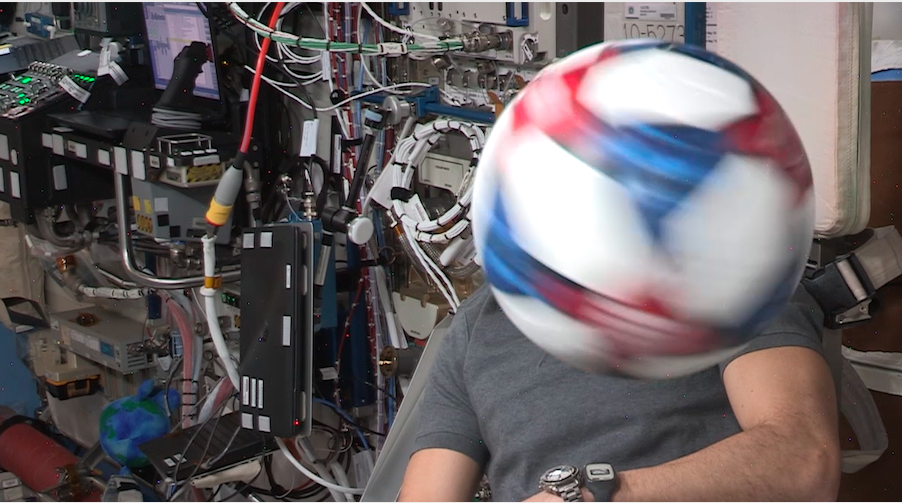Adidas announced its multi-year partnership with the International Space Station (ISS) U.S. National Laboratory, managed by the Center for the Advancement of Science in Space – CASIS, to explore the boundaries of product innovation, human performance and sustainability.
As part of Adidas and ISS National Lab’s commitment to leading innovation within their respective fields, the partnership will pursue breakthroughs to improve future design and engineering for athletes on and off Earth.
The initial phase of the partnership focuses on product innovation, and with the support of the ISS National Lab and technologies developed by NASA, Adidas will become the first brand to test footwear innovation in the extreme conditions of space. Adidas’ coveted Boost technology is scheduled to be tested without the distraction of gravity – which could influence the performance and comfort of existing models and enhance innovation of new products.
Adidas soccer balls delivered by the NASA-contracted SpaceX CRS-18 cargo mission earlier this year have been tested in a series of experiments aimed to extend understanding of flight characteristics beyond an Earth-based wind tunnel. Depth in spherical aerodynamics will enable more design freedom for panel shape and texture.
James Carnes, Vice President of Brand Strategy for Adidas, said: “Working with the International Space Station U.S. National Laboratory and CASIS – one of the most advanced facilities in the world – will help Adidas set new standards in performance innovation. This partnership not only allows us to co-create improvements to sport performance but to explore processes and design that could be applicable to Adidas’ dedicated efforts in sustainability as well.”
In future phases, Adidas also plans to research elements such as human performance and sustainability while leveraging the space station. Insights from the strenuous physical training regimen developed for astronauts to endure the harshest of conditions could also allow Adidas to apply potential learnings to athletes.
Space provides the ultimate testing ground to maximize material usage and value within extreme conditions and confined environments. Future research on the space station applied to Adidas’ LOOP CREATION PROCESS for circular manufacturing could help advance sustainable creation and recreation methods applicable to Earth.
“The unique conditions of space provide the ideal environment to discover the unknown. For example, microgravity is the only condition in which we can observe specific experiments like the behavior of a spinning soccer ball without interrupting airflow and external supports holding it in place. Having control of certain variables allows us to conduct tests and collect insights that aren’t possible on Earth,” explains Christine Kretz, Vice President of Program and Partnerships of the International Space Station U.S. National Laboratory.
Adidas will send its signature Boost pellets and footwear to the ISS National Lab onboard a future SpaceX cargo mission, with testing to begin as early as 2020. Astronauts onboard the station will execute experiments without the distraction of Earth’s gravity to uncover whether it’s possible to produce Boost midsoles with regions of different particle sizes– something that scientists theorize could optimize footwear performance and comfort.
Photo courtesy Adidas
















